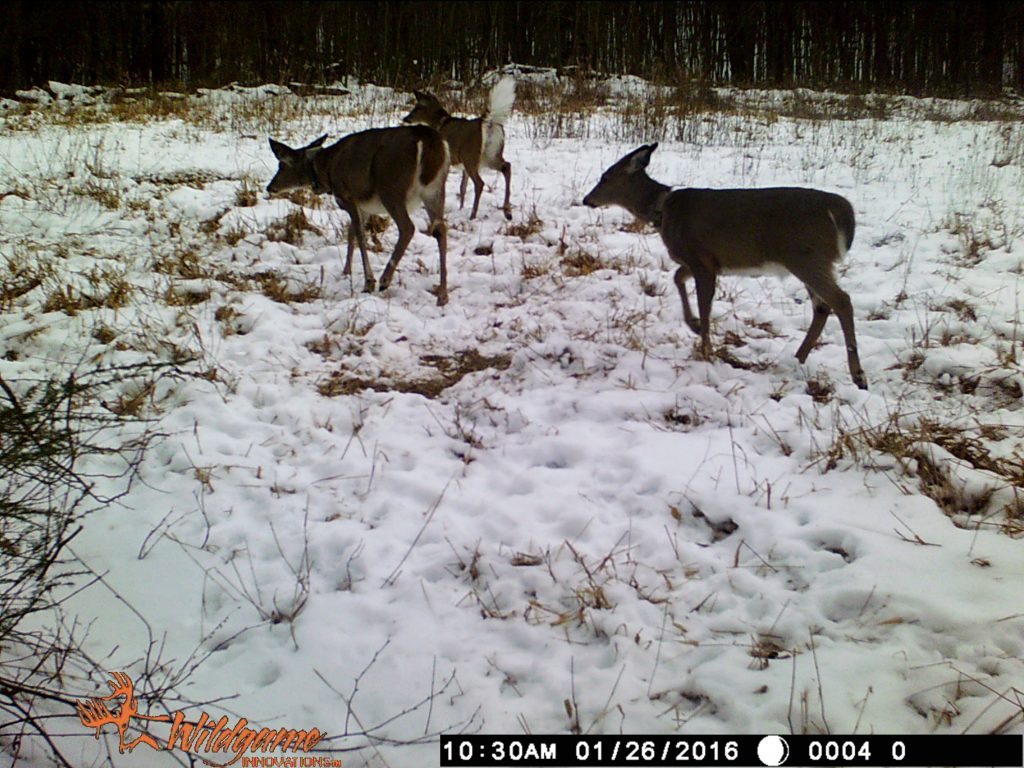Since the current fawn study is being compared to the previous fawn study, we are performing the same types of analyses.
Next up is our final fawn survival estimate after 34 weeks post capture.
As a recap, field crews captured 42 newborn fawns last summer during the first year of the current fawn survival study. When we provided the last update in October, half of the fawns were still alive and facing their next challenge – surviving the hunting seasons.
So how did they do?
Through the fall and winter, 1 fawn was shot, 1 fawn died of pneumonia, and 1 fawn died due to apparent predation.
Identifying causes of mortality in the wild with certainty can be difficult. The fawn that was shot provides a good example. Was it a legal harvest?
The mortality occurred during the firearms season. A blood trail was observed. We found the gut pile and collar laying nearby. But the shooter never reported the harvest to us.
Was the shooter a hunter who legally harvested the deer but chose not to report it? Was the shooter a poacher who did not have appropriate licenses to take an antlerless deer? We will never know. All we can say is the evidence clearly points to a bullet as the cause of death.
As we close the book on the first year of this fawn survival study, 40 percent of the marked fawns survived to 34 weeks. This survival rate is similar to the 38 percent survival from the previous study’s forested study site 15 years ago. Most of the mortalities were caused by predation.
It won’t be long before fawning season is here again, and just like last year, we will be out capturing, marking, and monitoring a new batch of fawns.
With more than half of fawns not making it to or through hunting season, are there any twins left out there? Some fawns still have a sibling but not many (about 16%). This minority was caught on one of our trail cameras. Mom and her twins ambled by in late January (see photo above).
But a family photo like this is even rarer. The probability that both siblings of twins survive 34 weeks is 0.16 (16 of 100 sets of twins). The probability mom AND both her twins survive is closer 0.13. Given those odds, this photo seems like 1 in a million, not 13 in a 100 🙂
Here’s to another successful fawning season.
-Chris Rosenberry, Supervisor
PGC Deer and Elk Section

